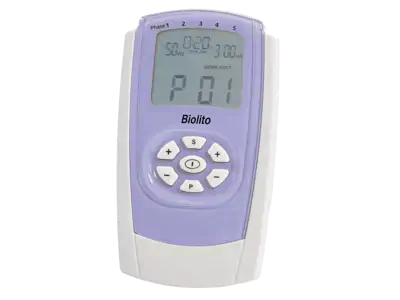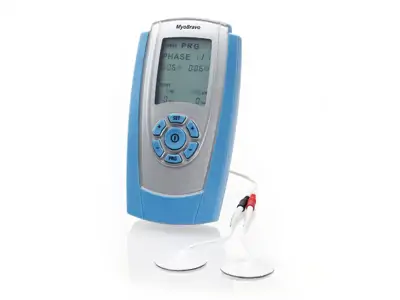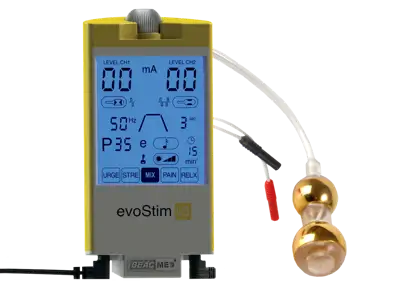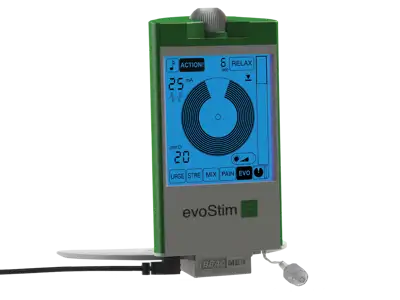Fecal incontinence
An inability or weakness to hold stools, causing them to leak involuntarily.
Read more...Faecal incontinence is a disorder or inability to hold stools, which causes an involuntary leakage of faeces from the rectum. It is also called "bowel incontinence" in the West. Its severity varies from individual to individual, ranging from a few drops to complete loss of control. Whatever the cause, faecal incontinence can be very embarrassing. Many people feel ashamed and don't seek medical help, even though treatment can improve the majority of cases.
Symptoms
Temporary faecal incontinence can occur during an "occasional" diarrhoea, when the urge comes on so commandingly that you can't reach the toilet.
Permanent faecal incontinence is when it is a chronic, recurrent condition.
There are two forms:
- Passive incontinence: there is no bowel stimulus, but the faeces still "leave a mark" on the lower bowel or are spontaneously passed. It may be caused by weakening of the anal sphincter or by a dysfunction of the sphincter.
- Continence with defecation: the patient is unable to stop defecating, which occurs so suddenly that he/she cannot reach the toilet in time.
Faecal incontinence can cause anxiety or depression. The person may feel ashamed to tell their doctor. There are several treatments that can improve or even eliminate the condition. If you wait for years, neglect it, you reduce your chances of recovery. The sooner you start using it, the better the chance of cure.
Treatment options
Faecal incontinence can occur at any age, but is more common in adults over 65. It is more common in women as it can be a complication of childbirth. Recent research has also shown that women receiving hormone replacement therapy for menopause are more likely to have faecal incontinence.
The management of faecal incontinence is important for a number of reasons.
On the one hand, the loss of dignity associated with the loss of the ability to hold a bowel movement can cause feelings of shame, anxiety and depression. It is common for the person to try to "hide the problem" by avoiding contact with others, becoming withdrawn.
On the other hand, the skin around the anus is delicate and sensitive, and stools cause stool to rise, causing pain and itching.
Managing treatment requires a trained professional who can tell you which methods to use and how to use them. But the treatments themselves can now be done at home, so you no longer need to visit the doctor's office(s) every day.
Prevention
Prevention can be helped by:
- Reducing constipation - increase physical activity (walk, jog, exercise regularly), eat more fruit and vegetables, eat high-fibre foods and drink plenty of fluids.
- The cause of diarrhoea caused by an intestinal infection needs to be treated.
- Avoid straining when defecating - straining can slowly weaken your rectal sphincter muscles or even damage nerves.
One of the goals of fecal incontinence treatment is to learn how to strengthen your pelvic floor muscles to sense when it's time to defecate and to become able to contract your sphincter muscles.
Intimate Gymnastics
Daily "gymnastics" that require you to voluntarily tighten your rectal sphincter muscles. The effects can be expected after months of "exercise". Although it is the cheapest and easiest way to treat faecal incontinence at home, it is also the slowest. With muscle stimulation, you can achieve results in a significantly shorter time.
Electrotherapy and biofeedback
is a device that uses a sensor probe inserted into the anus to help intimate exercise. Sensing is done by detecting the electrical activity of the muscle (EMG). Muscle tension (electrical potential) is detected and reported by the device. For example, it indicates the intensity of the contraction with a number or a light.
The biofeedback device itself does not treat, but helps you learn how to perform the exercise most effectively. Biofeedback helps you achieve results more efficiently and quickly than intimate exercise.
Functional electrostimulation
In this case, the pelvic floor sphincter is trained by a device that works the pelvic floor muscles directly through an electrode inserted into the anus. It's a passive method, so it treats without you doing anything.
Muscle stimulation can be used to treat both muscle weakness and muscle overactivity - of course, you need a different programme for strengthening and a different one for relaxing. Muscle stimulation can also help if the incontinence is caused by an injury or other problem with the motor nerve that runs to the sphincter, so you can't do voluntary exercise.
An additional benefit of this method is that it "teaches" the nerves that run to the sphincter. In the case of a hyperactive sphincter, the stimulation causes the muscle to relax and "learn" to relax.
The stimulator device is easy to use and you can safely perform intimate exercises at home without the presence of a doctor.
Stimulation gives results significantly faster than intimate gymnastics. With regular, daily treatment, muscles are strengthened/loosened and bowel holding-void becomes controllable again. The first results are seen after 2-3 weeks, but treatment should be continued for 8-10 weeks. The results achieved by this time should be maintained with maintenance treatment such as regular intimate exercise or 1-2 stimulations per week. (If you stop treatment altogether, the problem may return over time.)
ETS, or biofeedback-evoked stimulation
The most modern and effective incontinence treatment device is ETS, or biofeedback-evoked muscle stimulation.
A probe inserted into the anus senses when you voluntarily tense your muscles. At a pre-set "squeeze" force, the device "squeezes", i.e. strengthens the sphincter muscle with a stimulation pulse delivered through the probe. This makes the muscle contraction more effective.
The ETS, or combined biofeedback + stimulator, is the most effective way to treat incontinence.
In some cases, electrostimulation is not recommended, such as in the presence of a pacemaker and severe cardiac arrhythmia.
Here you can read detailed information about contraindications to electrostimulation.
Back to top...




